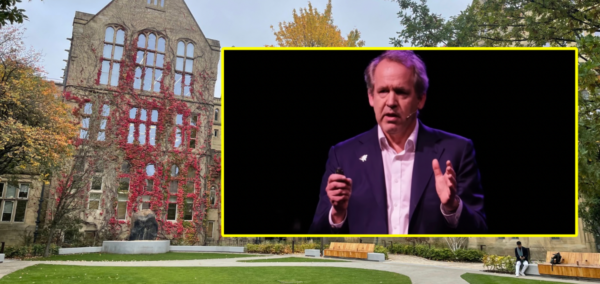
King’s vice-chancellor says UK universities are caught in a ‘triangle of sadness’
Professor Shitij Kapur is concerned about the ‘decline in quality’ of universities
King’s College London’s vice-chancellor, Professor Shitij Kapur, warns in a recent publication that UK universities are trapped in a “triangle of sadness” between aspiring but anxious students burdened with debt and uncertain prospects, a “stretched government” that allowed tuition fees to fall behind inflation, and “beleaguered university staff” who felt caught in the middle.
The paper highlights that despite the UK having one of the best graduation rates globally, with universities seeing 80 percent of those who start university complete their course, 90 percent of graduates take out a loan. The UK has the most indebted graduates in the world, with the average debt of around £45,600, The Independent reports.
He goes on to say that “the ‘lucky ones’ who make it to university aren’t feeling as lucky anymore” in light of the uncertain job prospects, worries about environmental sustainability and nearly half of UK undergraduates reporting mental health issues.
Kapur says that the present system has “reached its best-to-date” with UK tutition fees making up 72 percent of the cost of universities for education and the UK government providing the lowest proportional contribution to university education in the OECD. He warns that students will suffer if the UK university system is allowed to “decline in quality” as a result of a “stretched government” that has allowed tuition fees to fall far behind inflation.
Professor Shitij Kapur set out three steps to secure a brighter and sustainable future for university students.
one – stop the erosion of resource and decline of quality
UK home students pay £9,250 in tuition fees each year, as set in 2012, which are now worth around £6,000 in real terms. In the last three years alone inflation has eroded 20 percent of the resources of universities.
Most Read
“Absent any relief, universities will need to keep recruiting more and more international students to be able to afford to teach their domestic counterparts – making the education of UK students hostage to shifting geopolitics and fuelling national concerns about too many immigrants”.
He calls for a system of inflation-related uplifts in student fees – a system that was previously planned under the Johnson and May government in 2017 – tied to assurance of quality as determined by the Teaching Excellence Framework.
two – secure our research leadership and economic prosperity
The paper argues for the government to fund the costs of the research it sponsors for the university system cannot respond to future research opportunities if it is burdened with making up the current 20 percent deficit of the cost of every research project it takes on.
It also proposes to focus new resources on areas that are critical for the future economic competitiveness of the UK, as well as high-tech services and its ability to generate competitive advantages in the green economy.
three – create a sustainable system for the students of tomorrow
Even if we do not see an increase in the current rate of participation, UCAS estimates that the UK will see 38 percent more students seeking university places by 2030 than there are today.
Kapur proposes a differentiated system, with a greater specialisation across institutions and greater cost-effectiveness within them, comparing the UK’s system to Canada and California.
Professor Shitij Kapur, Vice-Chancellor and President of King’s College London, said:
“The UK higher education system is the envy of the world and one of the crown jewels of this country – but all jewels need repolishing and an occasional reset. This is not about figuring out what UK universities need in order to be world-leading. This is about how we secure our world-leading universities to serve our economic future and our social ambitions. To do this, we must stop the erosion and decline of quality, secure the science and technology leadership that supports our economic prosperity, and design a sustainable system for all our school and college leavers – those who go to university and those who pursue other pathways.”
Featured image via YouTube.




















